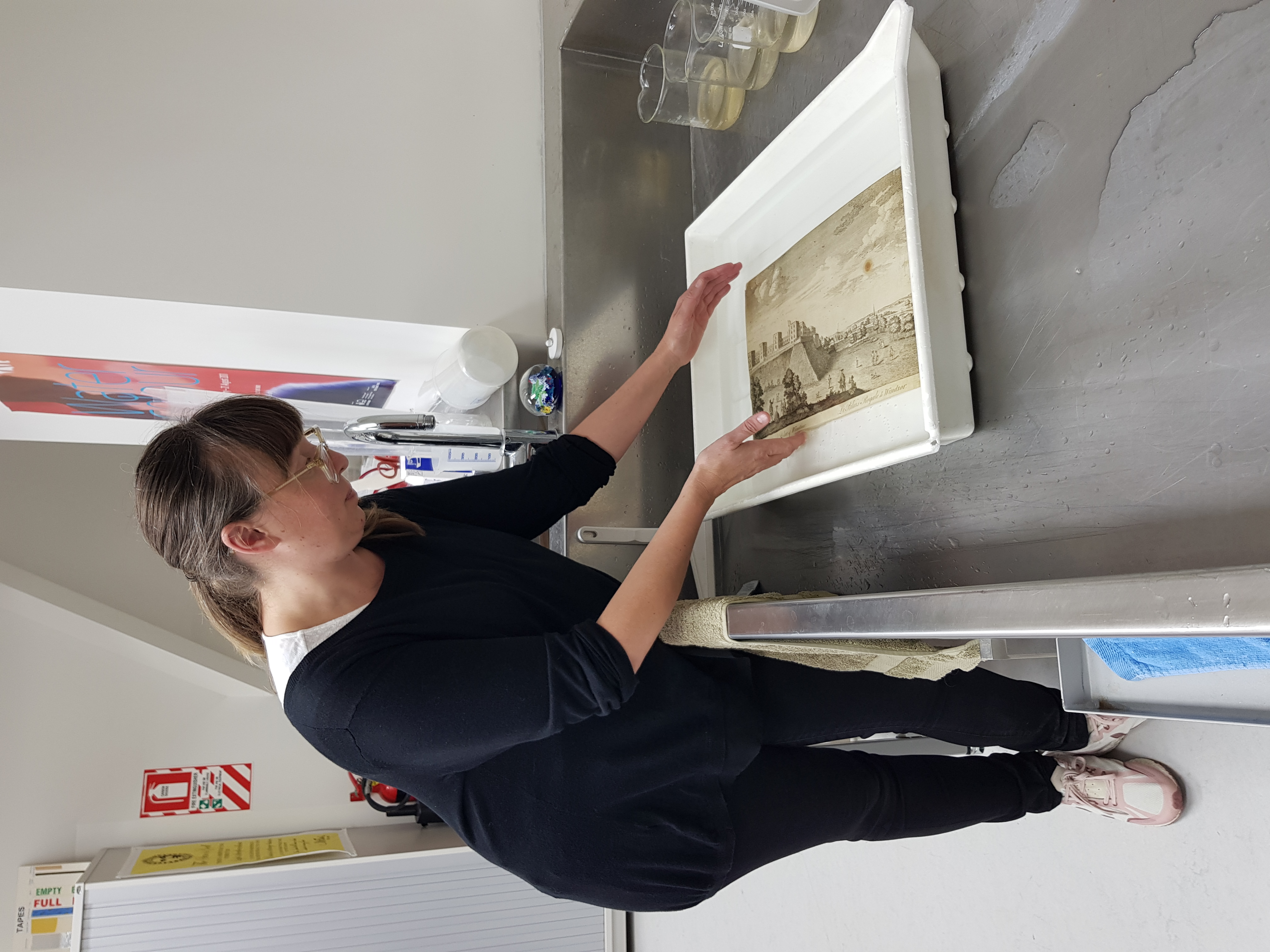Thanks to the Marylyn Mayo Foundation, specific internships are offered at the Gallery each year in particular areas, including within our Conservation department. The recipient of the 2021 Marylyn Mayo Internship is Tara Elder who is being supported to pursue her work in paper conservation, as well as research for an upcoming exhibition and study conservation practices under the guidance of leading experts.
Tara was attracted to apply for the Marylyn Mayo internship due to the opportunity it offers to work with the treatment of artwork, especially artworks on paper. The research side of the internship also appealed and, as Tara has been working in roles focused on preventative conservation and documentation, this internship gave her the opportunity to try out hands-on conservation treatments.
The Gallery is the only institution in the country that offers an internship of this kind and the opportunity to work with leading practitioners. The Gallery’s Conservation Research Centre is home to specialists working in the areas of painting, works on paper, photographic and objects conservation.
As part of her work, Tara is undertaking research into specific pigments for an upcoming exhibition – work that involves looking at the chemistry of these pigments and any conservation problems that could arise.
However, it doesn’t stop there. Tara also been investigating the dark past of certain pigments with the aim of developing a Horrible Histories-inspired public programme for children and young adults. Tara’s work has unearthed twisted tales on pigments, bringing to life the history of pigment and the dark past associated with pigments.
There’s ‘mummy brown’ – a type of brown pigment created from Egyptian mummies. Then there’s an emerald green that was used heavily in Victorian wallpapers, yet contained arsenic, known to be deadly.
‘Ivory black was traditionally produced by charring elephant ivory in a crucible. Indian yellow was produced from the dried urine of cows that had been fed a diet exclusively of mango leaves. Its manufacture was banned in India on humane grounds in 1908,’ explains Tara.
‘Most disturbing of all, mummy brown, a pigment that was in use from the sixteenth to eighteenth centuries, was made from pulverised Egyptian mummies.’
As part of this work, Tara has been able to utilise modern technology within the Gallery and at partner organisations. There’s X-ray fluorescence spectroscopy (XRF), which can determine which elements are present in a non-destructive way. Tara has also experienced scanning electron microscopy / energy dispersive spectroscopy (SEM/EDS) at The University of Auckland. This allows conservators to look at a tiny sample of paint and determine its elemental composition. Radiography’s large X-ray machines also allow for X-raying a painting, so the structure, frame, paint layers and much more can all be identified.


